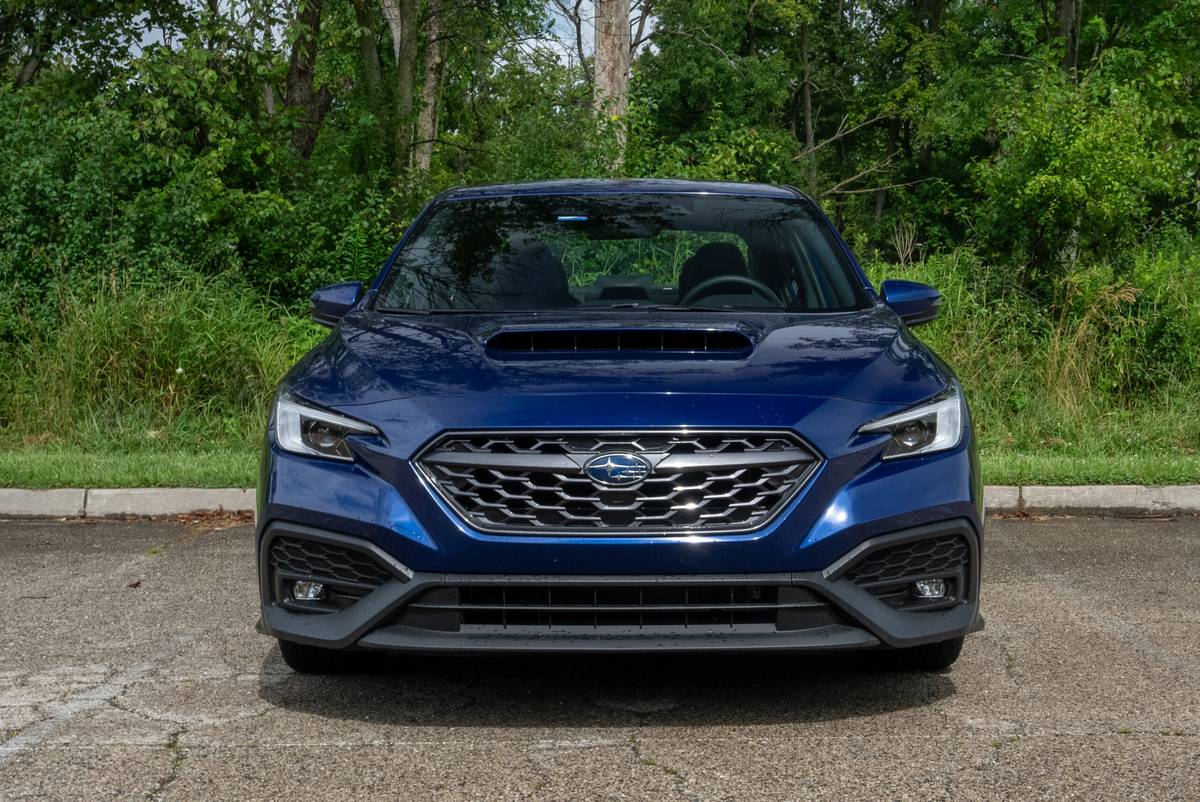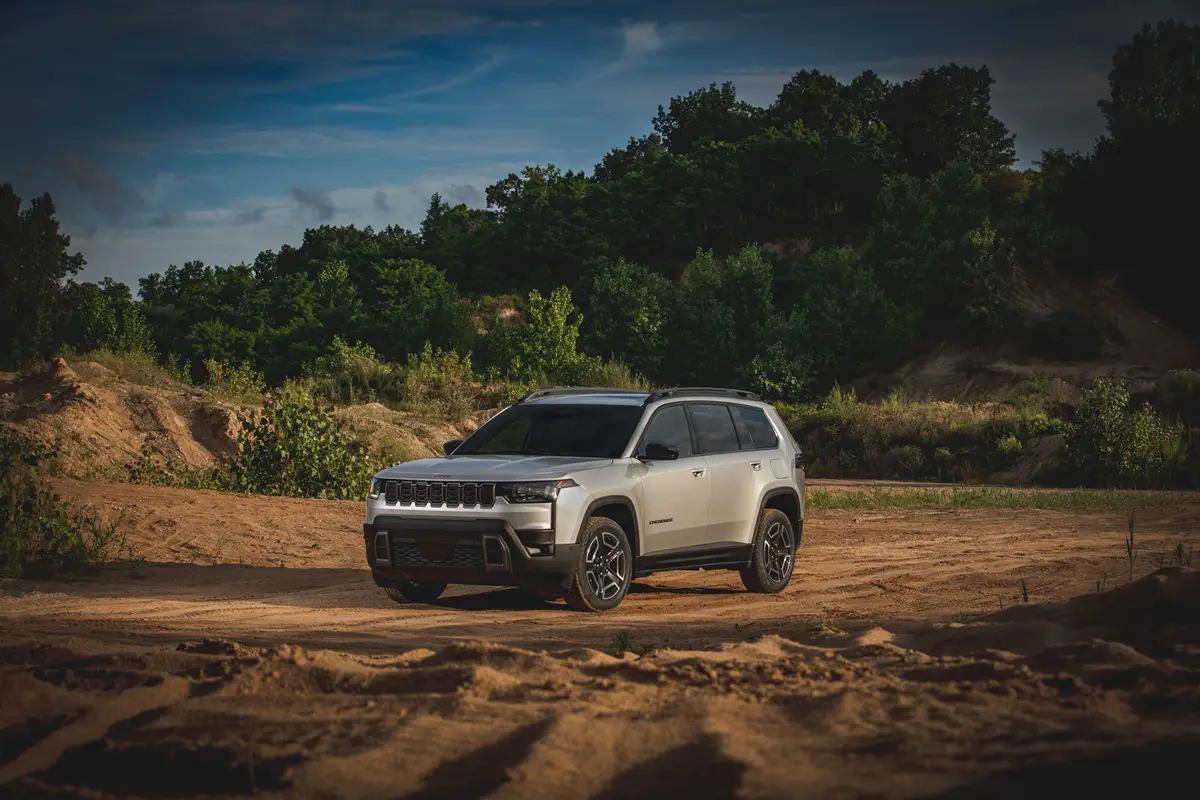2026 Hyundai Ioniq 9 Review: A Worthy Flagship EV

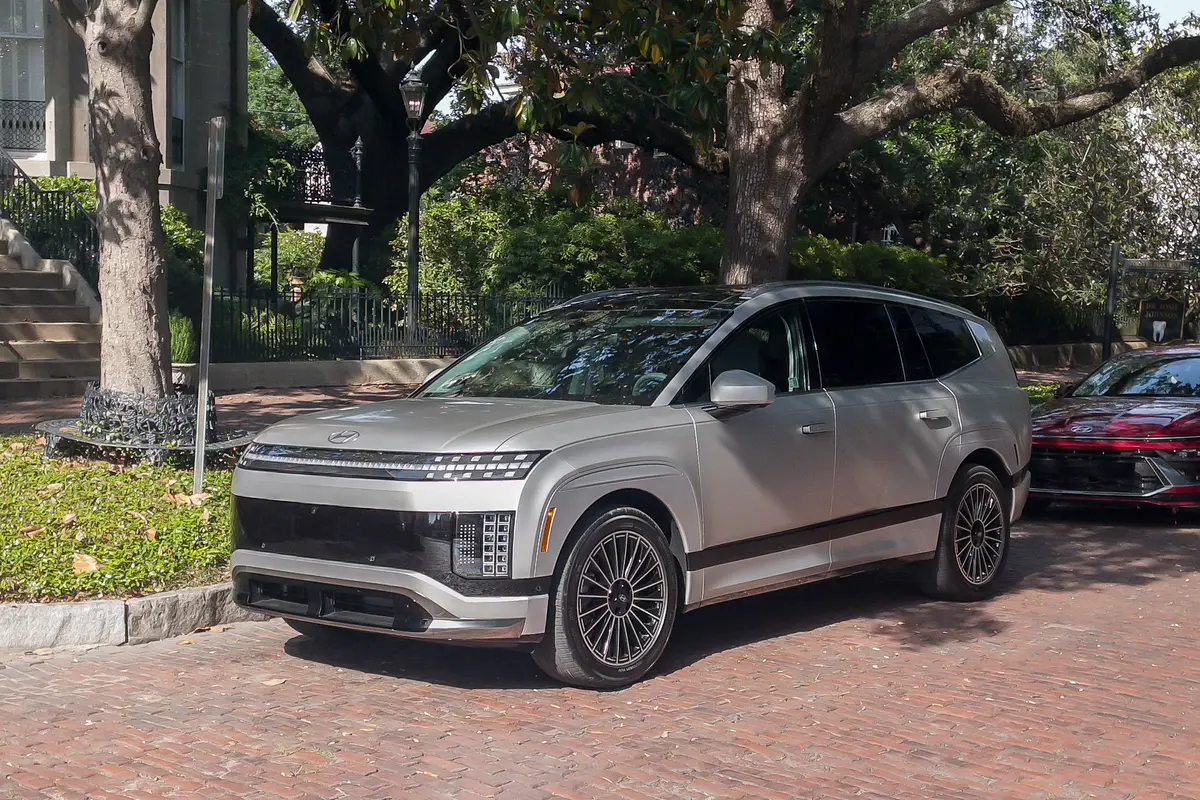
Is the Hyundai Ioniq 9 a Good EV?
- The all-new Ioniq 9 takes Hyundai’s already winning electric-vehicle formula — the Ioniq 5 and Ioniq 6 are both excellent — and thoughtfully applies it to a three-row SUV with great success, though the styling and price may not be for everyone.
How Does the Hyundai Ioniq 9 Compare With Other Three-Row EVs?
- The Ioniq 9 feels every bit as good as the Kia EV9, with what feels like greater interior roominess and comfort as well as more range and moderately more power than all versions but the upcoming EV9 GT, though it’s hardly noticeable in normal driving. The Hyundai is also a bit pricier than the EV9, but it feels worth the extra money and is still a significant value compared with the Rivian R1S.
We first saw the 2026 Ioniq 9, Hyundai’s new flagship electric vehicle, at the 2024 Los Angeles Auto Show. Given our affinity for the smaller Ioniq 5 hatchback/SUV and Ioniq 6 sedan, we looked forward to seeing Hyundai’s EV excellence applied to a more family-friendly body style.
Related: 2026 Hyundai Ioniq 9 Up Close: The Gang’s All Here
Given the longstanding rivalry between the Hyundai Palisade — our 2025 Best Family Vehicle pick and two-time defending winner in our three-row SUV comparison tests — and the Kia Telluride, and considering how much we enjoy our long-term 2024 Kia EV9 Land, we expected the mechanically similar Ioniq 9 to impress, creating an electrified version of the Palisade-Telluride rivalry. To find out if this was the case, I headed to Savannah, Ga., to drive the all-new Ioniq 9 and see if it upholds the high standards that Hyundai’s EVs have set (per Cars.com’s ethics policy, we pay for travel and lodging when attending such manufacturer-sponsored events).
For this drive, I got behind the wheel of the top Performance Calligraphy Design trim level, which has the highest-output dual-motor all-wheel-drive powertrain that makes 422 horsepower and has a very respectable 311 miles of estimated range. As tested, this Ioniq 9 was priced at $79,090 (including a $1,600 destination fee). That makes it the most expensive Hyundai currently on sale. Is the Ioniq 9 good enough to convince shoppers to shell out nearly $80,000 for a top trim level, especially when the redesigned 2026 Palisade will be significantly less expensive and is now available with a more efficient gas-electric hybrid powertrain?
Related Video:
How Much Does the 2026 Hyundai Ioniq 9 Cost?
- S: $60,555
- SE: $64,365
- SEL: $67,920
- Performance Limited: $72,850
- Performance Calligraphy: $76,590
- Performance Calligraphy Design: $79,090
The good-adjacent news for shoppers is that the Ioniq 9 and its battery are assembled in the U.S., so it’s currently eligible for the full $7,500 federal EV tax credit — though reports indicate that this credit will likely be phased out by the end of 2025.
Is the Ioniq 9’s Interior Nice Enough to Justify Its Price?
Inside the top Performance Calligraphy Design, materials quality is excellent front to back. Both the front- and second-row relaxation seats — a foot and leg rest can extend out — are very comfortable, and there’s a ton of room even with a giant panoramic moonroof. The technology inside the Ioniq 9 is also top notch — the 12.3-inch center touchscreen has sharp graphics and intuitive menus, and the 12.3-inch digital instrument panel is also easy to use and filled with helpful, easily digestible information. However, the curved rectangular displays do look a little out of place in an interior full of rounded shapes, and it’s also worth noting that while the Ioniq 9 is all-new, these displays aren’t; we’ve seen them in other Hyundais already, and they work just as well in those models.
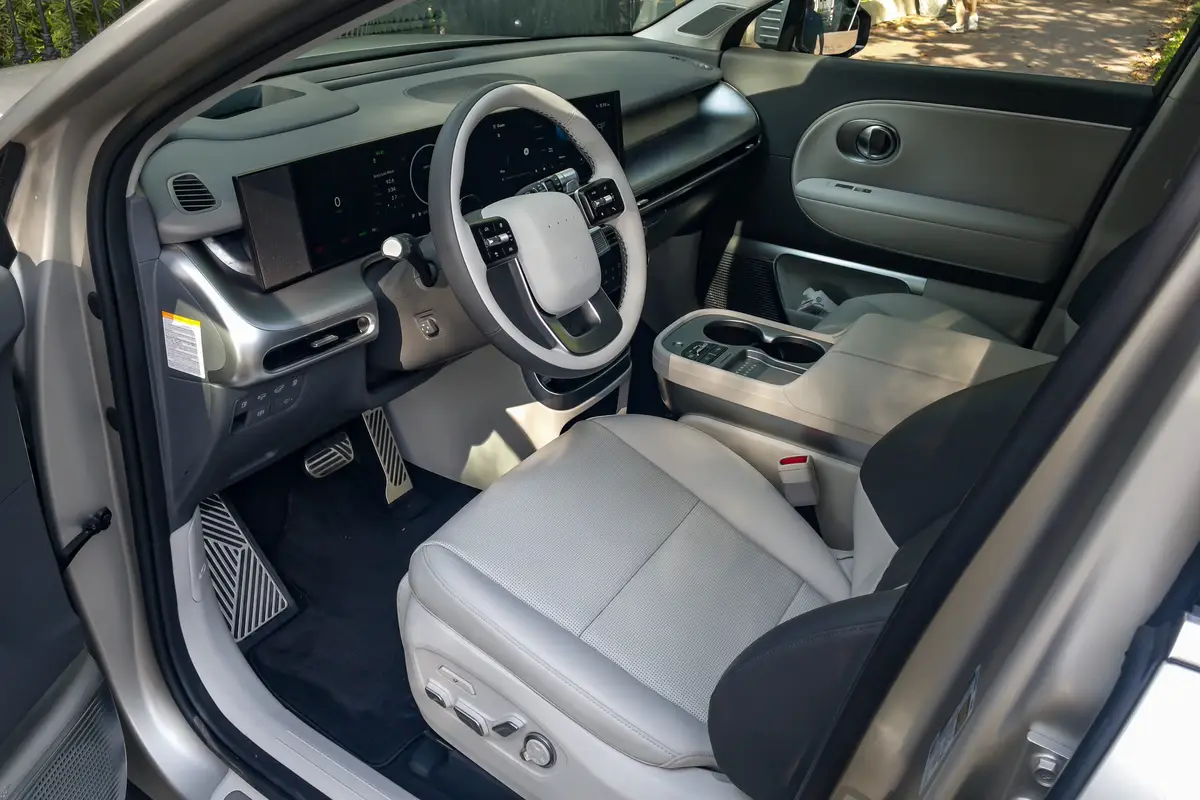
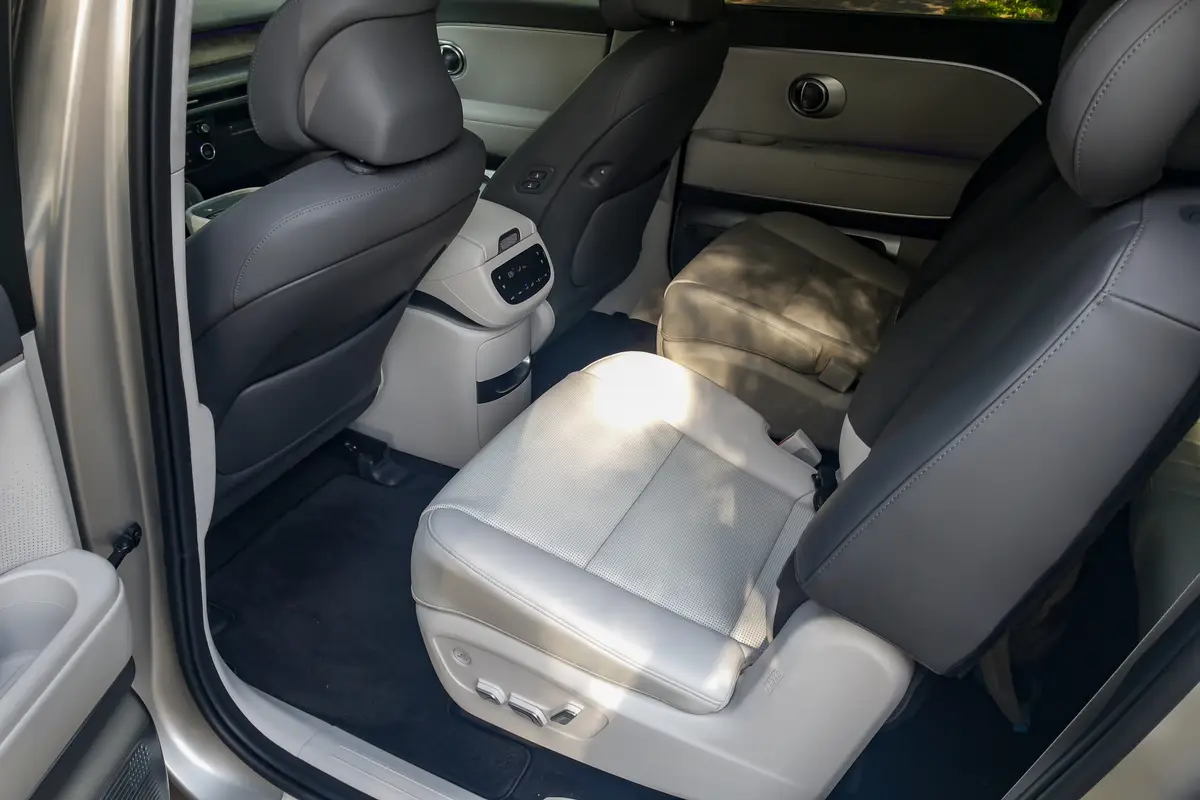
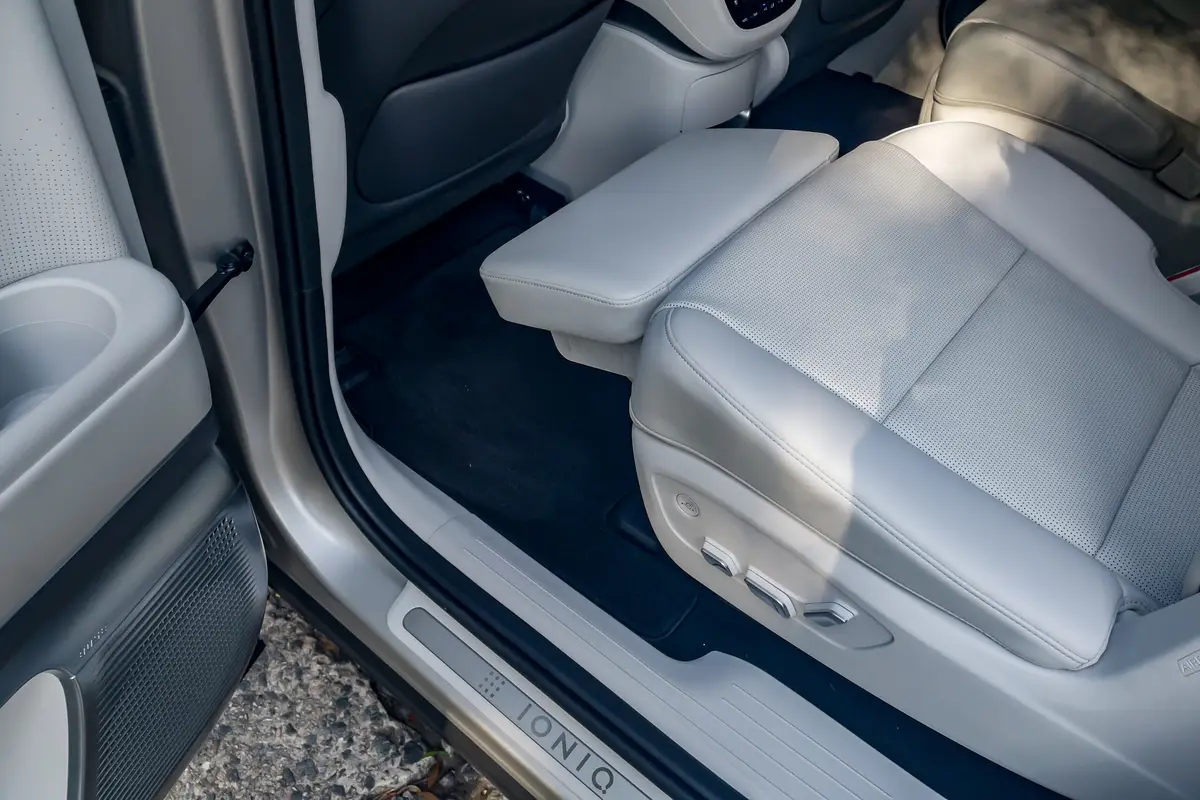
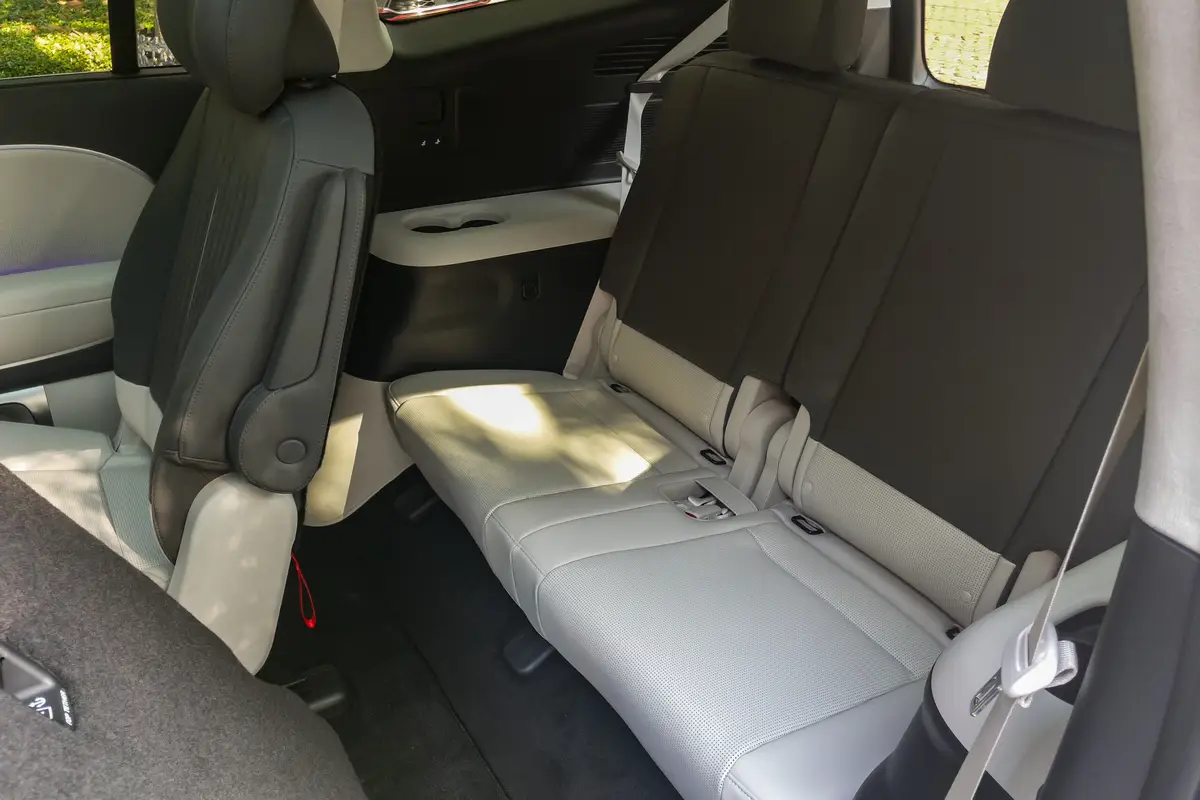
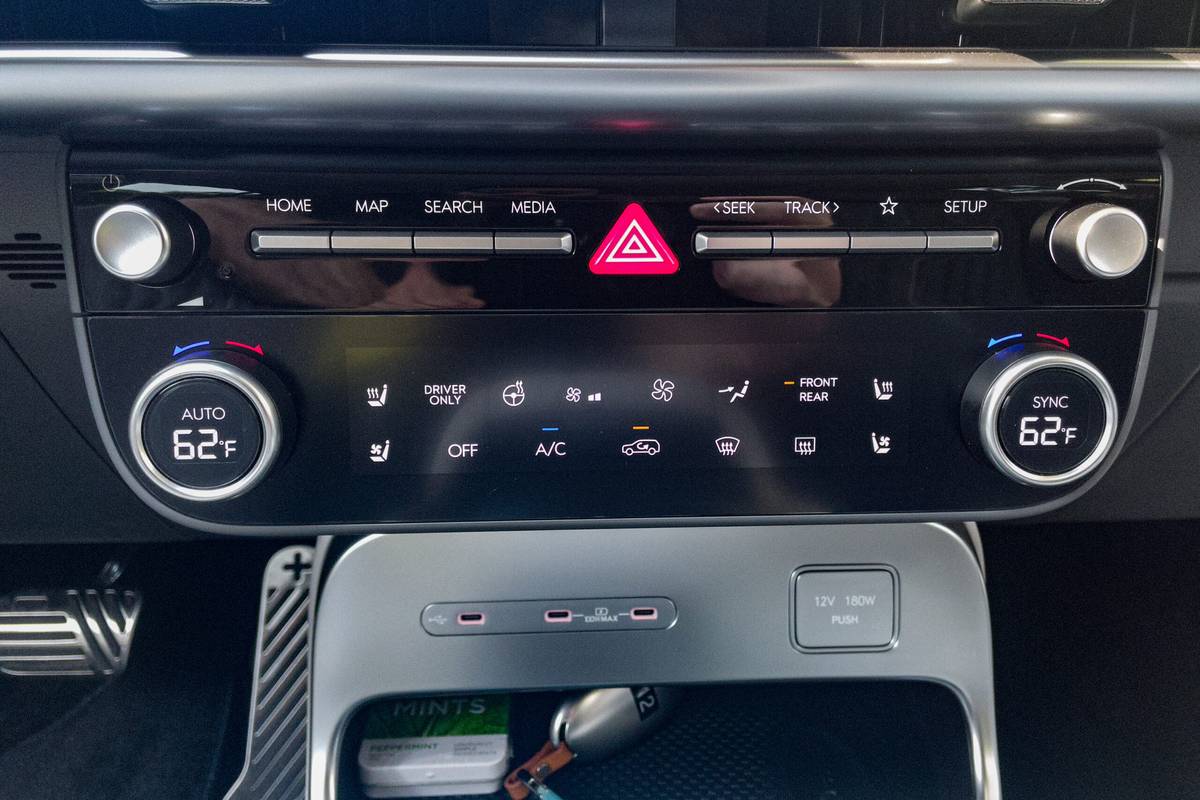
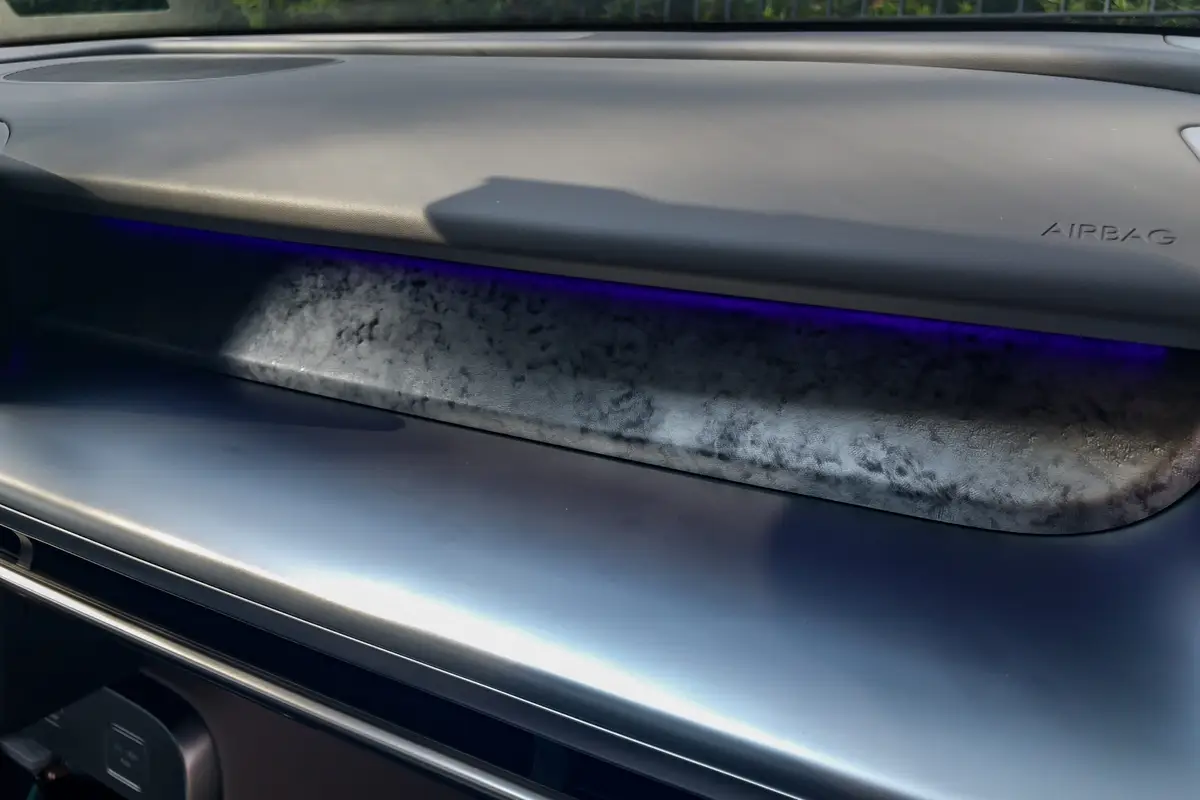

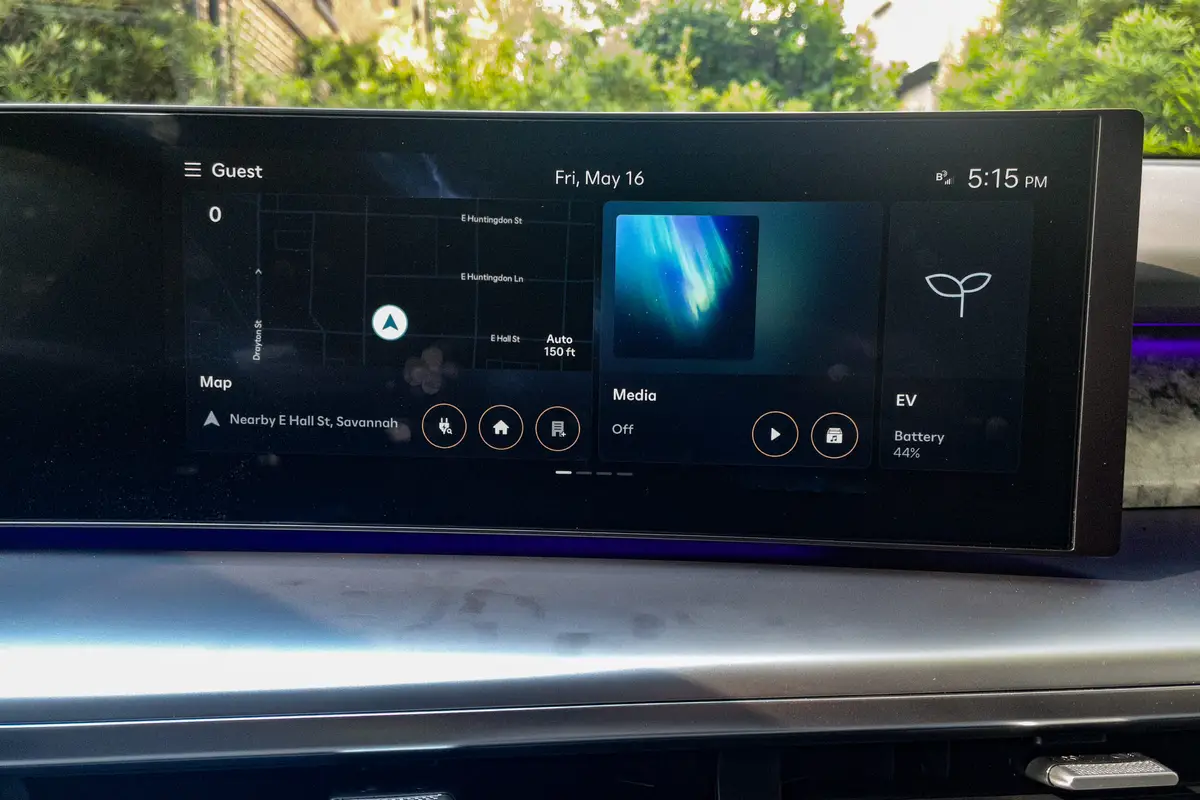
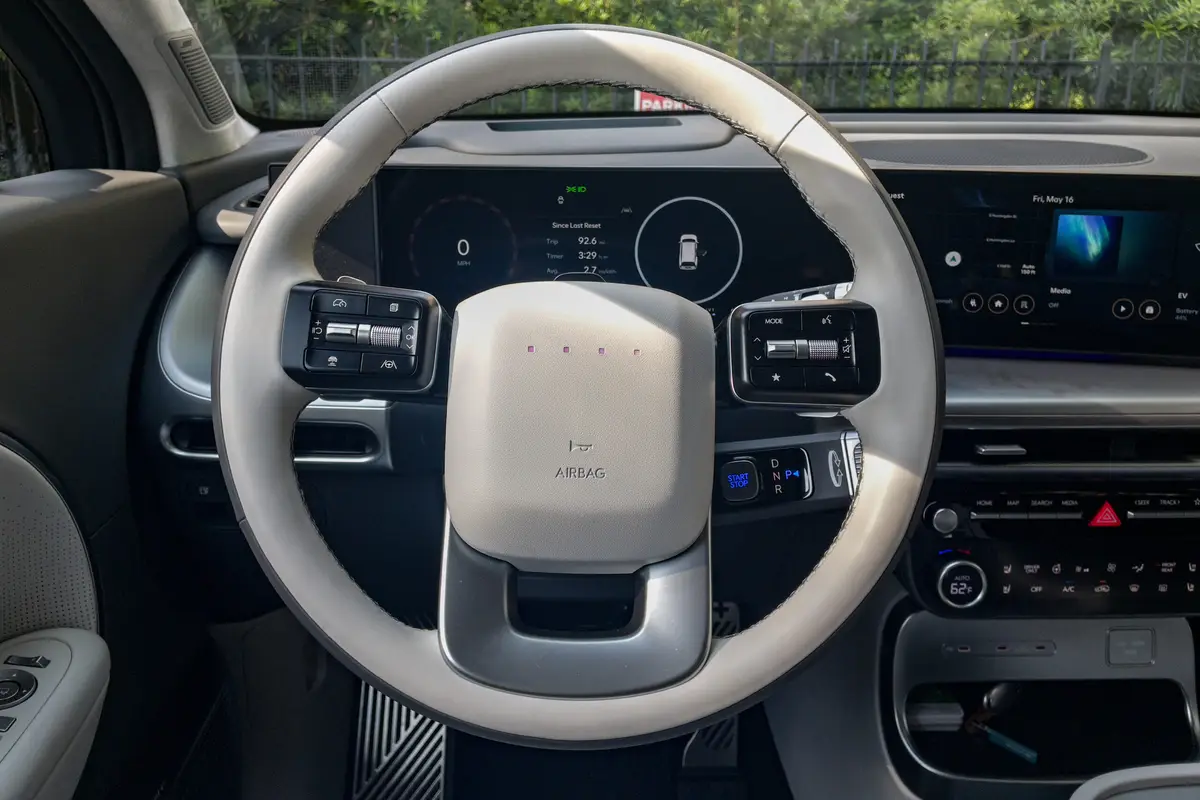
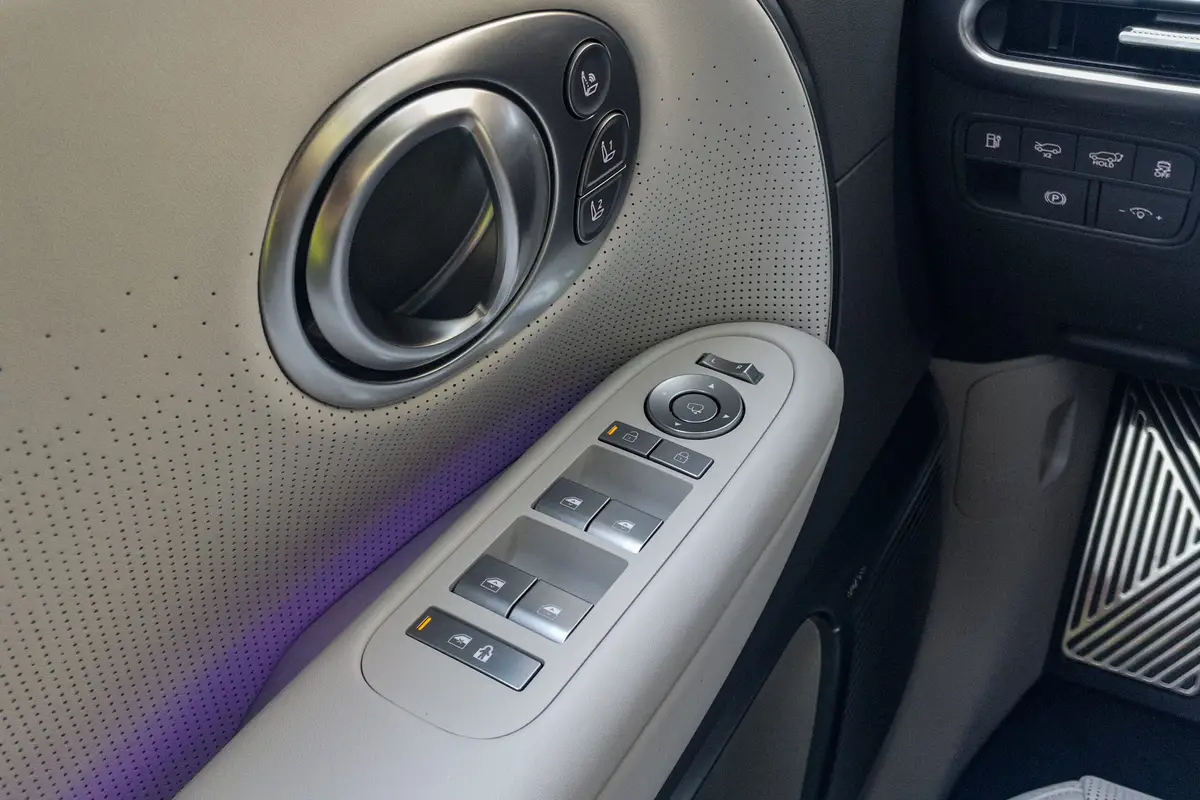

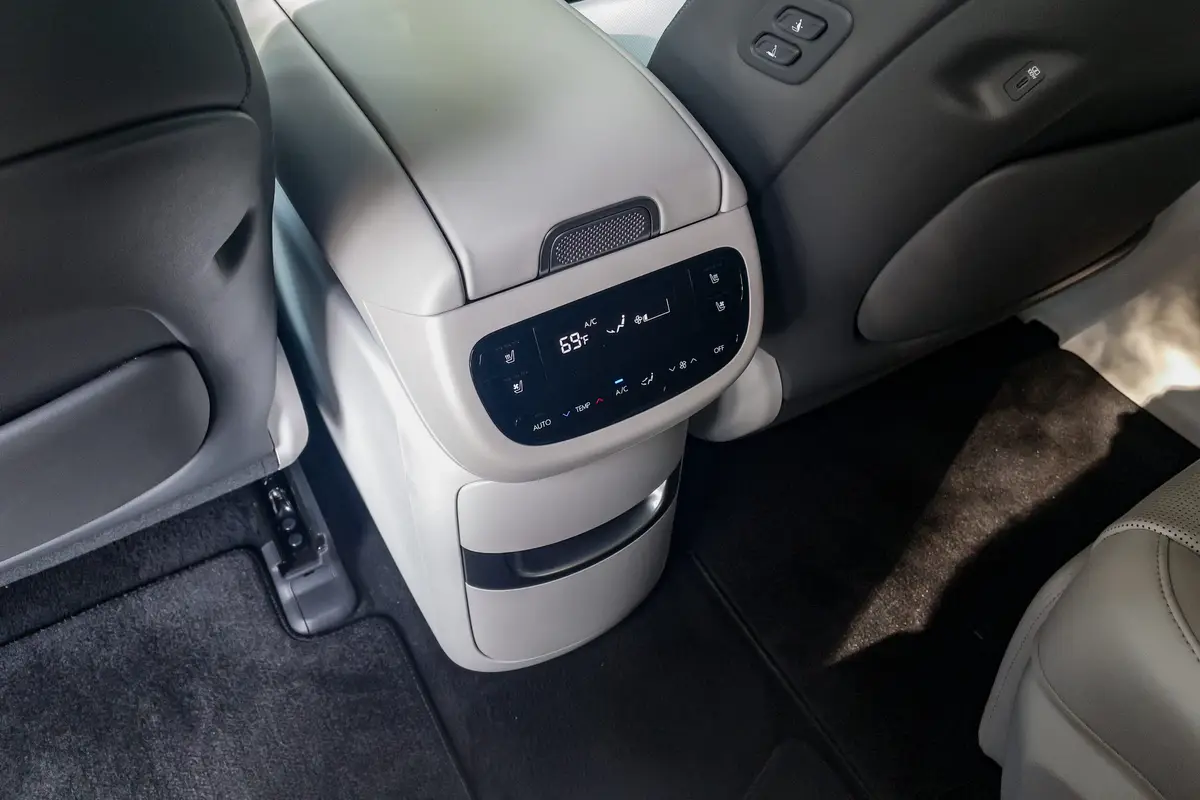
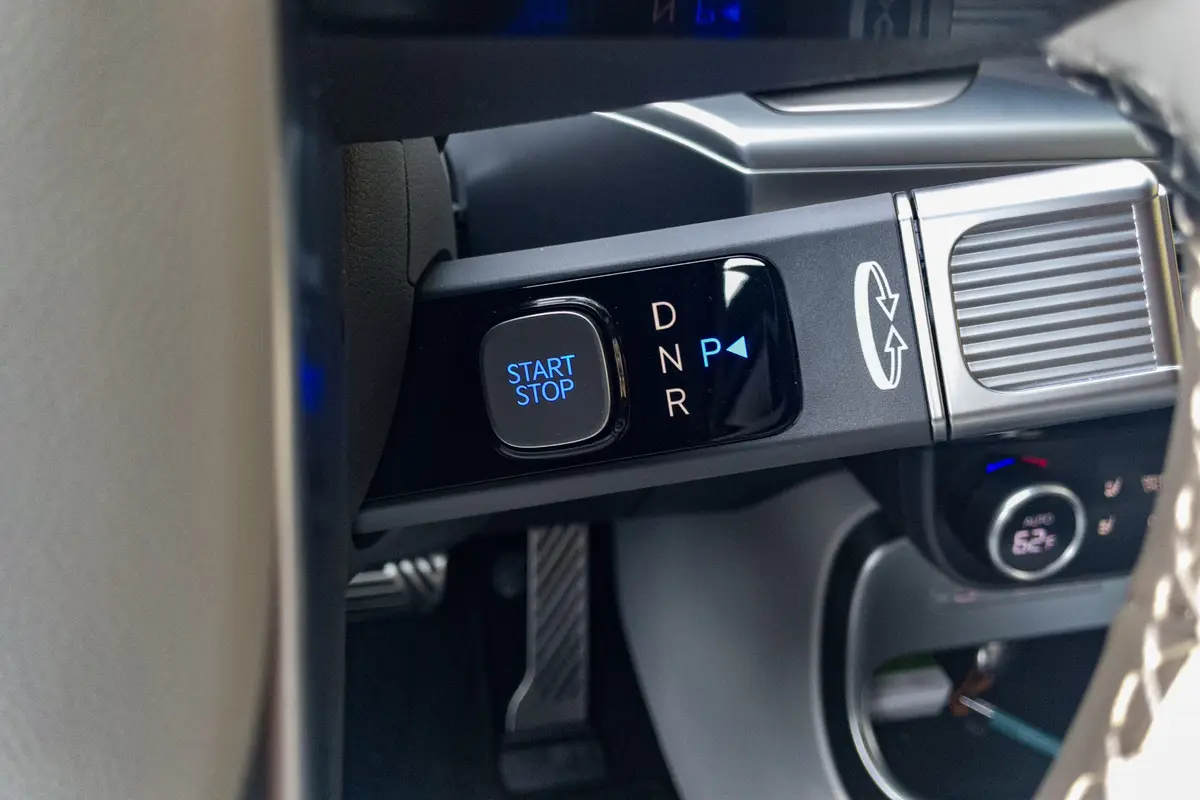

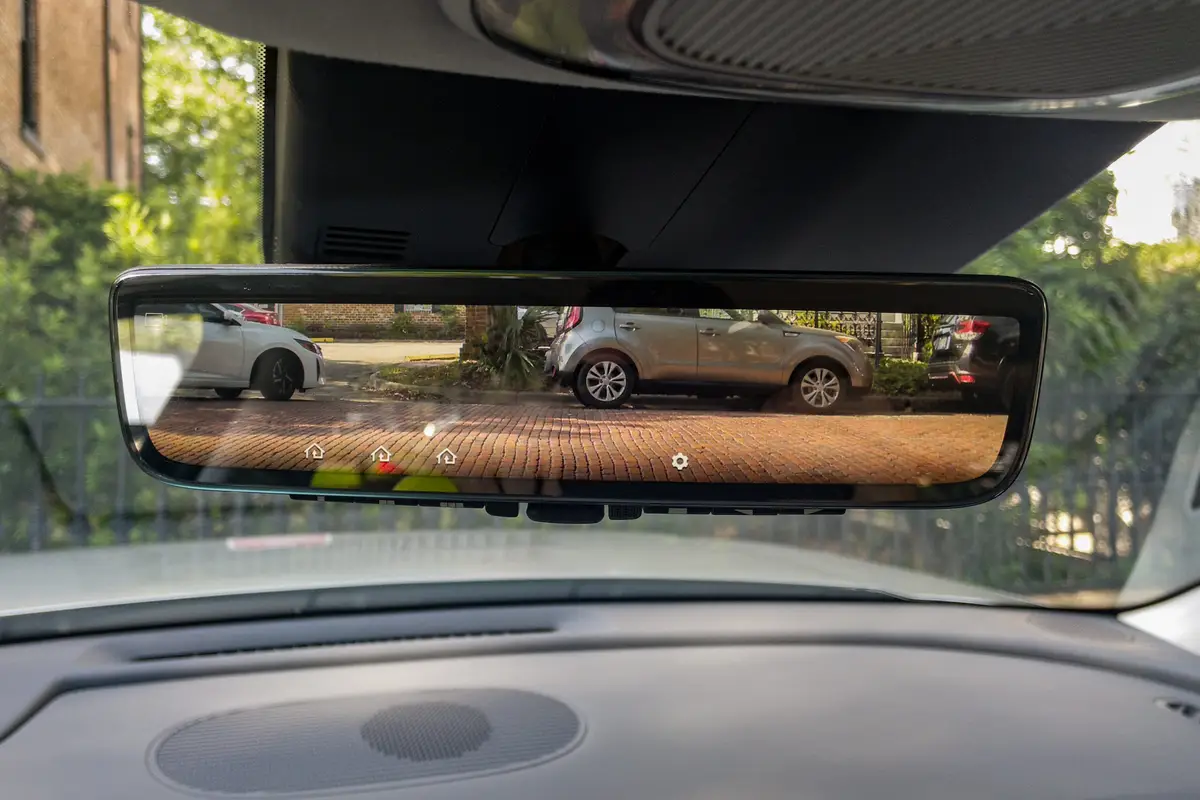
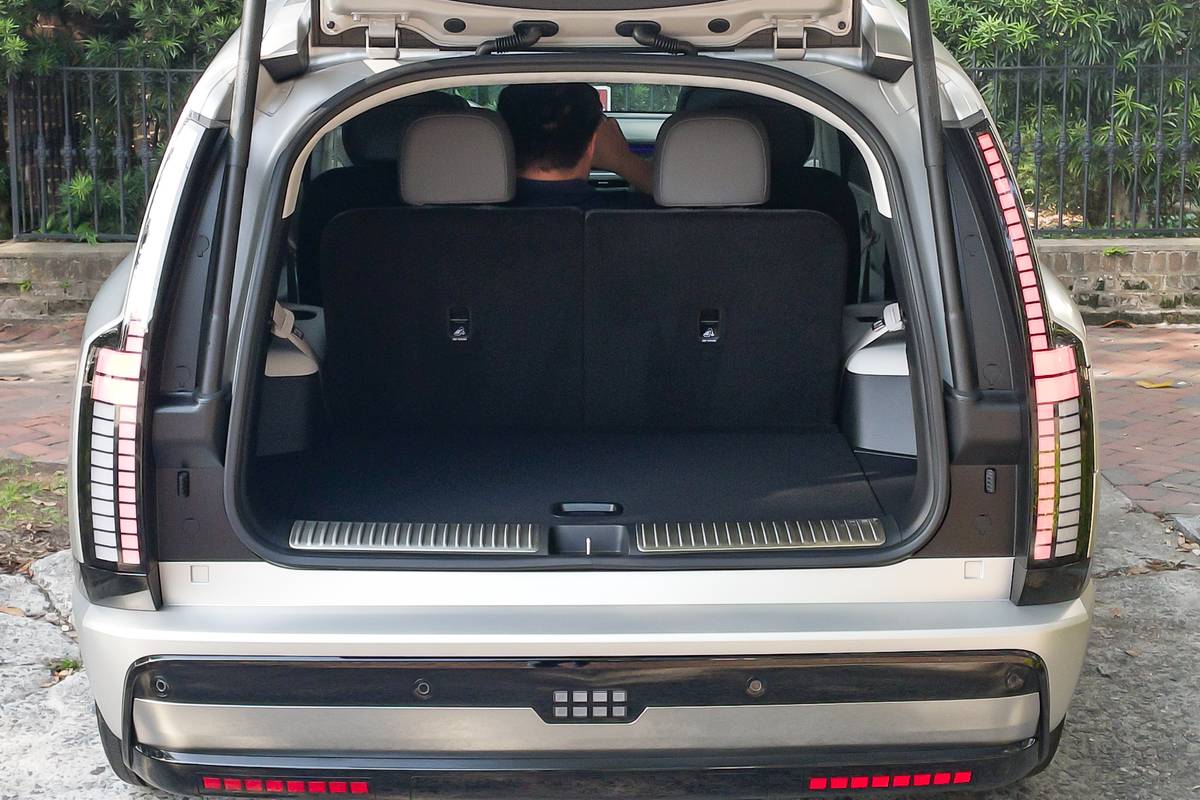
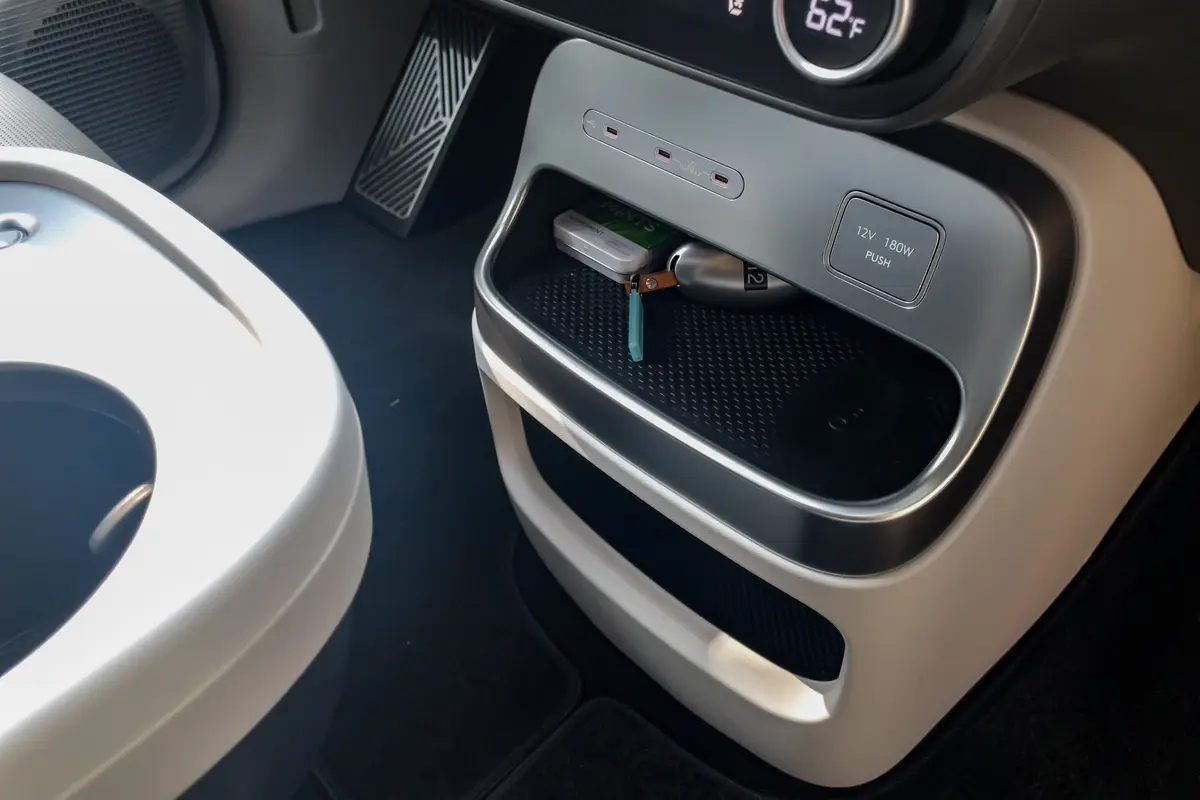

















The Ioniq 9 has other features we’ve seen first in other Hyundais. A movable center console debuted in the Ioniq 5, the dual-opening console lid first appeared in the new Santa Fe, and the pullout storage bin for second-row passengers isn’t even a Hyundai exclusive; our Kia EV9 has this (very useful) feature, too. Also welcome is the nearly minivan-like roominess in all three rows of seats and relatively easy access to the second and third rows for adults, with higher trims gaining power-folding seats and access controls.
While I appreciate the Ioniq 9’s separate climate-control panel below the touchscreen (as opposed to the EV9’s nearly hidden climate-control screen between its dashboard displays), many of the controls are touch-sensitive, and I would prefer more physical ones.
As nice as the Ioniq 9’s interior is, on its own, it isn’t enough to justify its range-topping price.
Why Is the Ioniq 9 So Expensive?
A lot of that likely has to do with its 110.3-kilowatt-hour battery pack, the largest in a Hyundai EV and slightly larger than the related EV9’s optional 99.8-kWh pack. Thanks to that big battery and a low 0.27 coefficient of drag, Ioniq 9 range estimates are as follows:
- Single-motor, rear-wheel drive: 335 miles
- Dual-motor, all-wheel drive: 320 miles
- Performance dual-motor, AWD: 311 miles
Having said that, when I got into a performance dual-motor Ioniq 9 with its battery at a 96% state of charge, the instrument panel range estimate displayed 352 miles. During my drive, the range estimates seemed accurate and ticked down as expected, and I saw efficiency readings in the 2-3 miles-per-kWh range, similar to what we’ve seen in our long-term EV9.
Shoppers considering an EV need to think about more than total range, but a sizable battery pack that can keep you going longer distances between charging is part of why the Ioniq 9 is so pricey.
How Does the Ioniq 9 Drive?
This might feel like another instance of damning with faint praise, but the Ioniq 9 does exactly what I expected it to do, with only one disappointing surprise. There’s plenty of oomph from a stop thanks to the electric powertrain’s instant torque delivery, and despite a nearly 3-ton curb weight for the Calligraphy model, the Ioniq 9 hustles around town and on highways well enough that I have no real complaints. It even has enough power in reserve at highway speeds to make passing maneuvers or merges with relative ease.
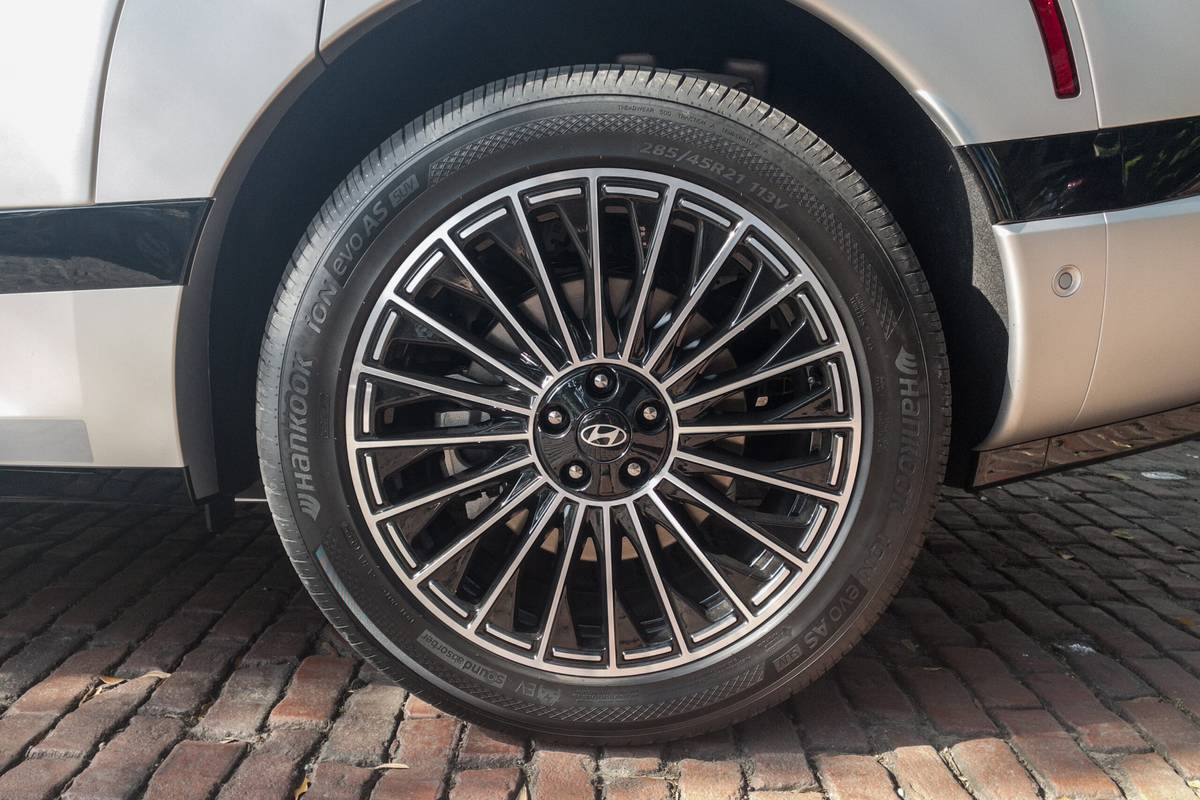
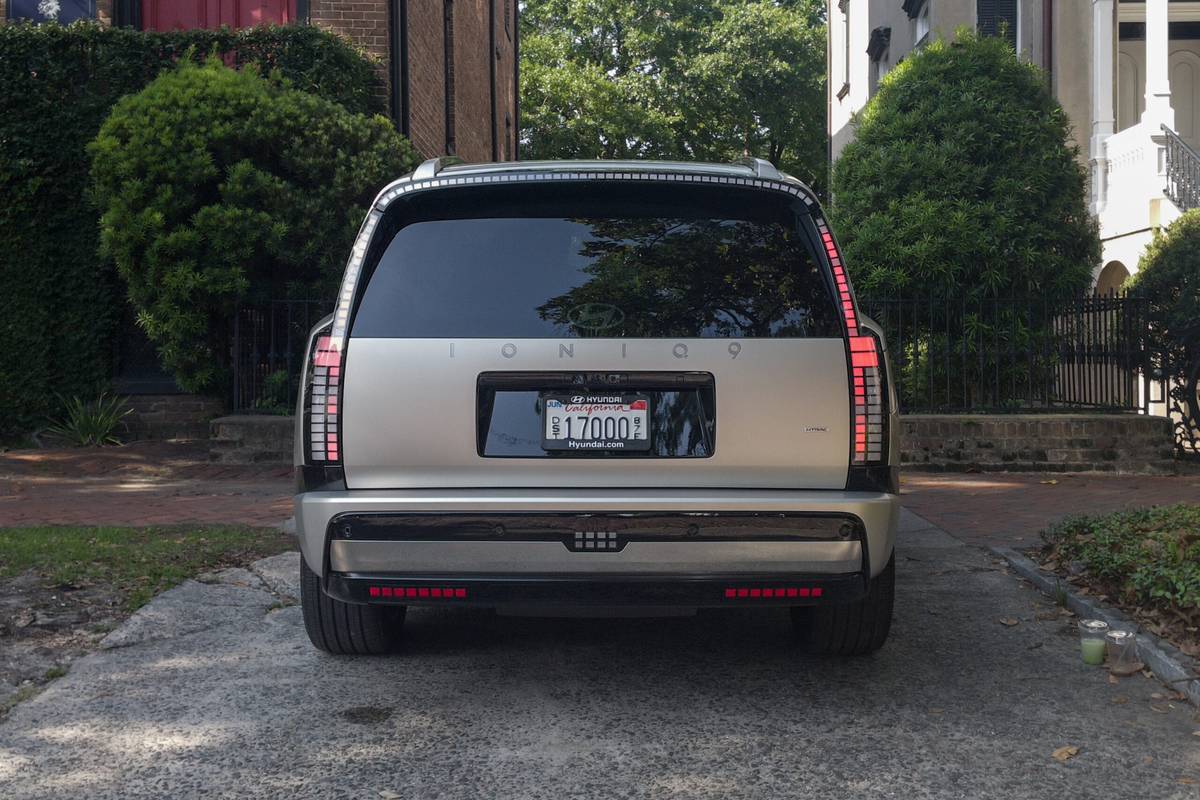
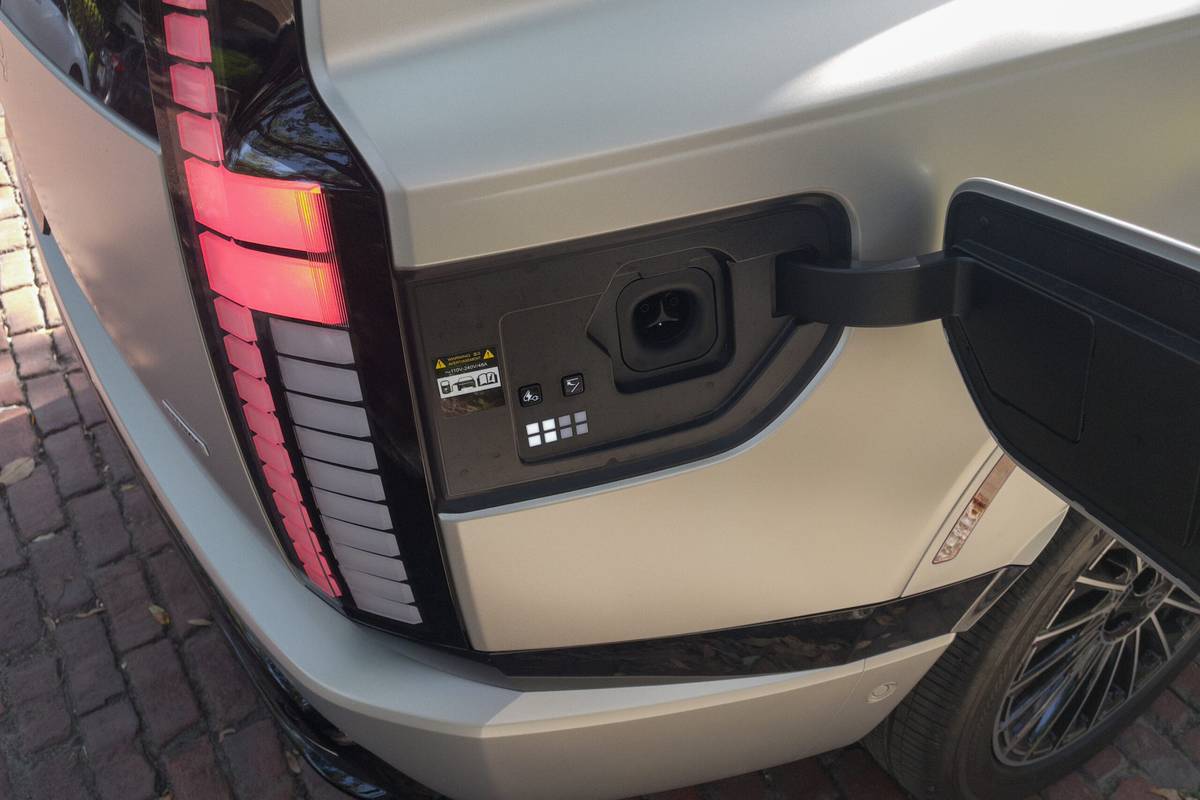
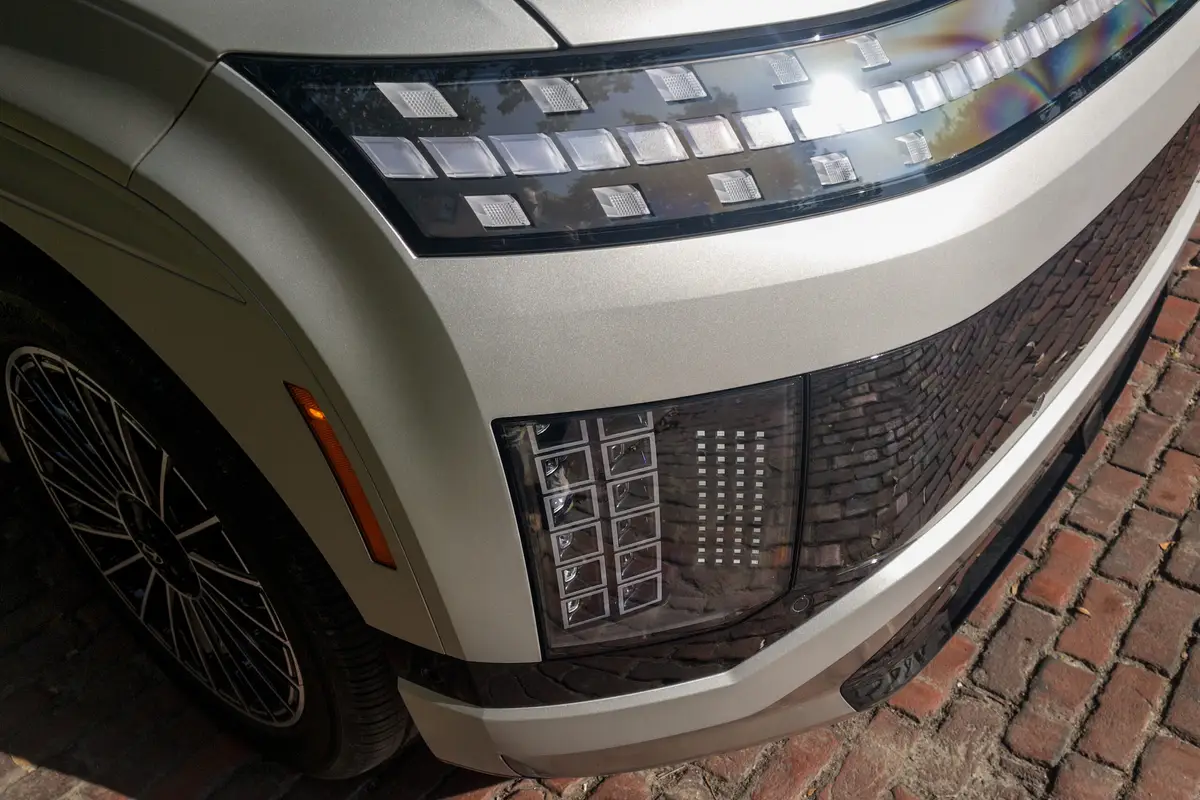

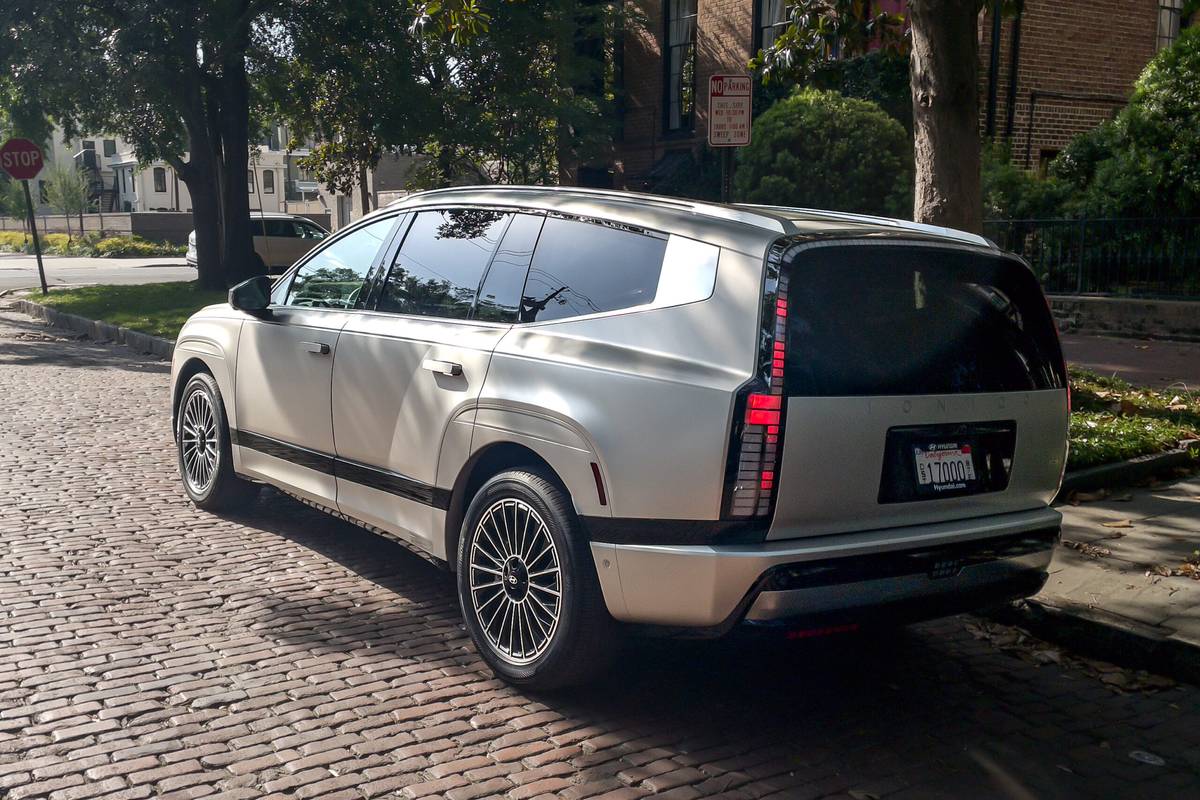
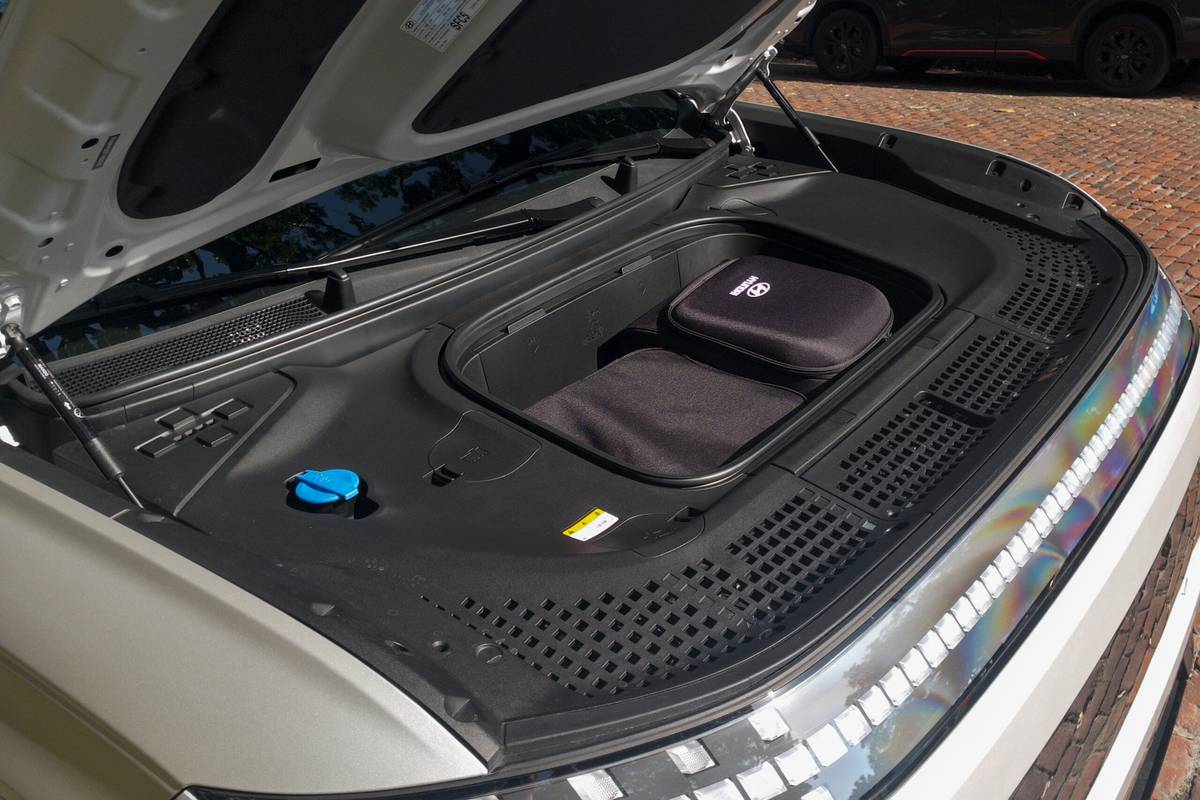
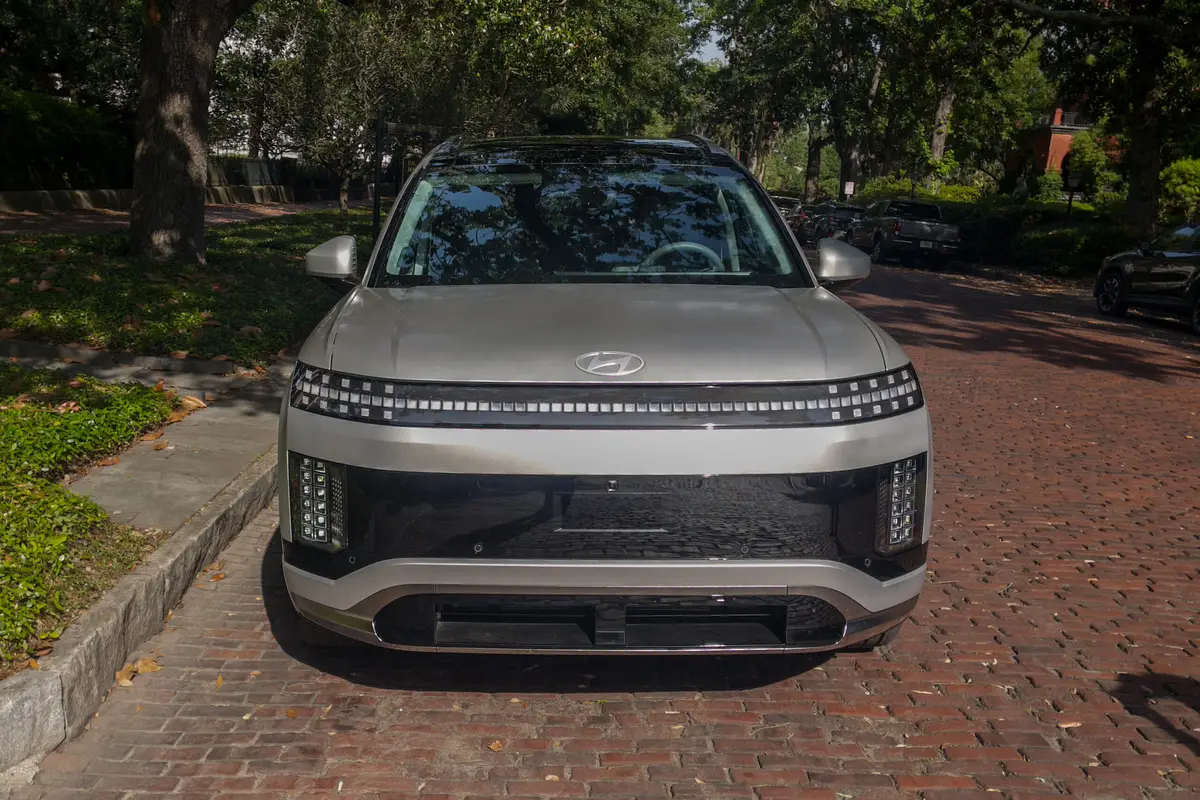
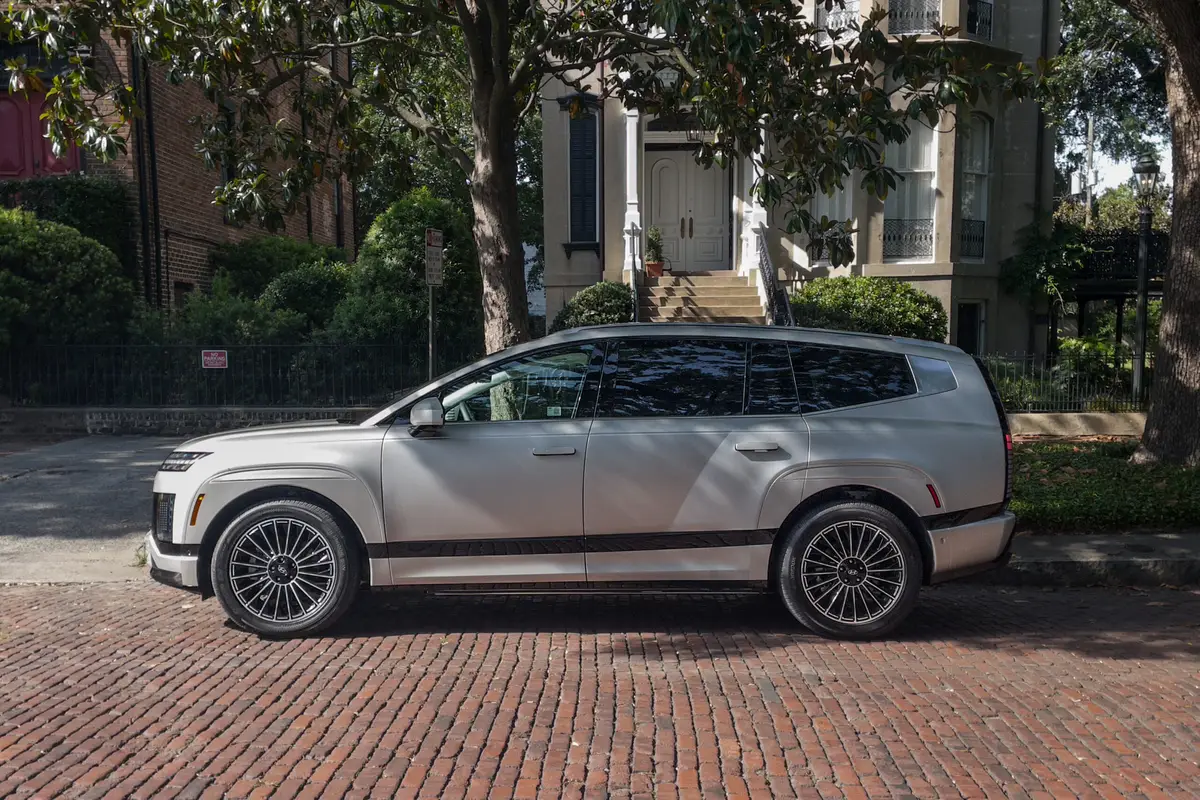









The performance dual-motor powertrain is rated at 422 horsepower and 516 pounds-feet of torque, but there’s no significant difference compared with our EV9’s 379 hp and 443 pounds-feet. Steering feel is big-SUV comfortable; it’s not numb, but it’s not overly communicative. Brake-pedal feel is linear enough, though around town, I preferred to turn on the i-Pedal one-pedal driving mode that’s supremely easy to modulate. Regenerative braking has five levels (Levels 0-3, then i-Pedal) and is easily adjusted via paddles mounted on the steering wheel. Drive modes like Eco and Sport dampen or sharpen accelerator response, respectively, but change little else about the driving characteristics.
Considering its heft, the Ioniq 9 also has decent ride quality and body control, though the Calligraphy’s 21-inch wheels and tires produced some firm impacts. The Ioniq 9 has the longest wheelbase of any Hyundai EV at 123.2 inches — longer than a Rivian R1S — which aids ride comfort as much as interior space. Hyundai also did its best to abate road, wind and tire noise with features like standard acoustic glass, sound-absorbing inserts inside the tires and the first non-Genesis application of Active Noise Control technology. There’s not an excessive amount of noise, but especially at highway speeds with the radio off, there’s noticeable road and wind noise, likely because there’s no gas powertrain to drown out any of it.
The disappointing surprise of my drive was the Ioniq 9’s lane-centering steering behavior, which had the SUV pinballing from side to side within the lane. While the Highway Driving Assist feature is useful for long trips, especially with its lane-change assist feature, constantly drifting from side to side in your lane doesn’t inspire confidence.
How Fast Does the Ioniq 9 Charge?
Like other Hyundai EVs, the Ioniq 9 has an 800-volt architecture and should charge quite quickly at public DC fast-charging stations. The Ioniq 9 also comes standard with a North American Charging Standard charge port, allowing it to access the Tesla Supercharger network without an adapter. According to Hyundai representatives, at Tesla V3 Superchargers, the Ioniq 9 charges at a rate of up to 126 kilowatts and can charge from a 10% to 80% state of charge in approximately 40 minutes. At a 350-kW DC fast charger and using an included Combined Charging System adapter, the Ioniq 9 can charge at speeds up to 237 kW and go from 10% to 80% in just 24 minutes. Level 2 home charging is capped at 11 kW and should bring the Ioniq 9 from a 10% to 100% charge in under 10 hours. (All time estimates are for ideal conditions.)
We have no reason to doubt these charging claims based on our experiences with other Hyundai EVs, but we’ll have to wait until we have an Ioniq 9 to test at our home office to verify them.
The standard built-in navigation system and Hyundai smartphone app also allow for route planning and navigation to charging stations, with the latter able to push a route to the Ioniq 9’s navigation system. Hyundai is also offering limited “plug and charge” capabilities — that is, plugging into a public charger automatically begins the charging session and bills the owner — for certain charging networks. The eventual goal is centralizing payment information in a single Hyundai-specific app instead of forcing owners to maintain and use multiple apps for different charging networks.
Would I Buy an Ioniq 9 Over a Kia EV9 or a Hyundai Palisade Hybrid?
The Ioniq 9 is an excellent electric three-row SUV, and so is the EV9. Personally, I prefer the Kia’s exterior styling but the Ioniq 9’s interior, so for me it would come down to how pricing and features compare trim by trim. As for an Ioniq 9 versus the new 2026 Palisade Hybrid, we can assume the Palisade will be more affordable, but we don’t yet know by how much. I think if I had to have a primary family hauler, I’d lean hybrid just for the ease of road-tripping one compared to an EV.
More From Cars.com:
- 2026 Hyundai Ioniq 9: 3-Row EV Boasts 335 Miles of Range, Starts at $60,555
- Hyundai EVs Get Plug-and-Charge, In-App Payments for Major U.S. Charging Networks
- 2026 Hyundai Ioniq 9: The Big EV With 3 Rows
- Research the 2026 Hyundai Ioniq 9
- Find a 2026 Hyundai Ioniq 9 for Sale Near You
What Else Are We Waiting on With the Ioniq 9?
After just a day of driving the Ioniq 9 around Georgia and South Carolina, we still have much to test beyond its charging capabilities. Stay tuned for more in-depth testing of the SUV’s cargo capacity, its ability to accommodate child-safety seats and more. We’d also love to see how one compares with our own 2024 Kia EV9. For now, though, rest assured that the new 2026 Ioniq 9 is every bit as good as we expected it to be.
Cars.com’s Editorial department is your source for automotive news and reviews. In line with Cars.com’s long-standing ethics policy, editors and reviewers don’t accept gifts or free trips from automakers. The Editorial department is independent of Cars.com’s advertising, sales and sponsored content departments.

Road Test Editor Brian Normile joined the automotive industry and Cars.com in 2013, and he became part of the Editorial staff in 2014. Brian spent his childhood devouring every car magazine he got his hands on — not literally, eventually — and now reviews and tests vehicles to help consumers make informed choices. Someday, Brian hopes to learn what to do with his hands when he’s reviewing a car on camera. He would daily-drive an Alfa Romeo 4C if he could.
Latest news
